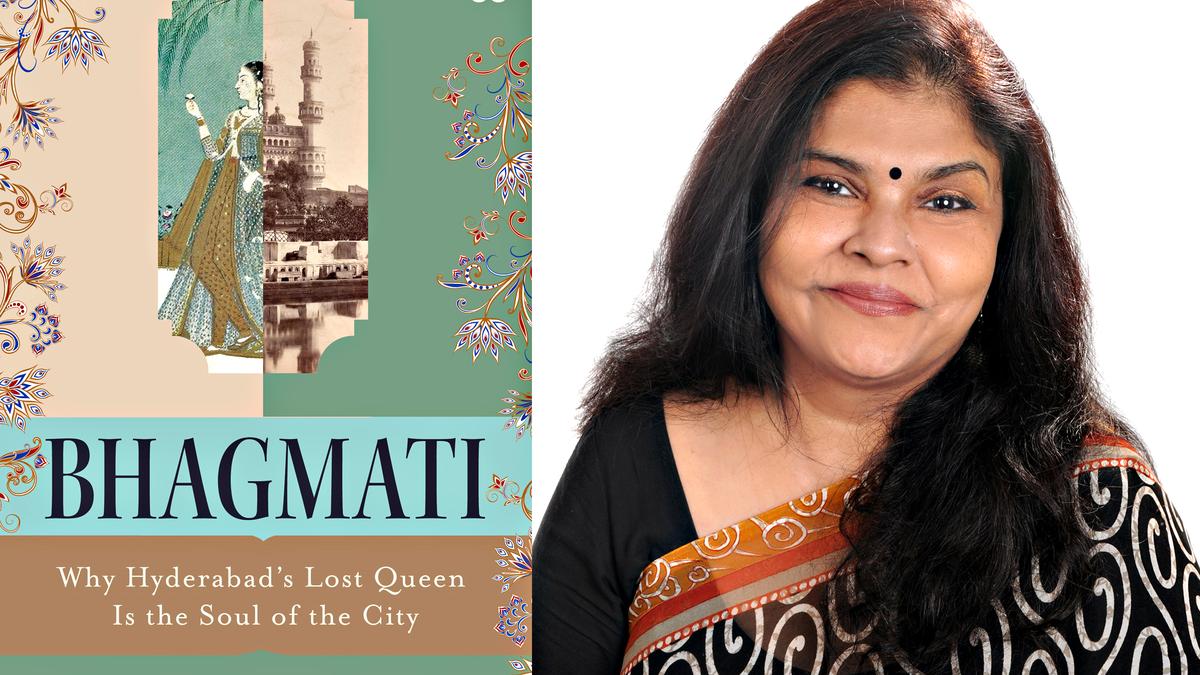
A new book explores Bhagmati, Hyderabad’s lost queen
The Hindu
Discover the legend of Bhagmati and the origins of Hyderabad in Moupia Basu's meticulously researched book.
Legend has it that the Purana Pul (or the old bridge) in Hyderabad’s Old City was built in 1578 by Ibrahim Qutb Shah after his son Muhammad Quli Qutb Shah crossed river Musi, in turbulent conditions, to meet his lady love Bhagmati. This love story is often linked to the foundation for this bridge and the naming of Hyderabad. However, some historians dispute this narrative, citing the lack of written records or physical evidence, such as a tombstone or memorial, to support the claim.
In her book Bhagmati: Why Hyderabad’s Lost Queen Is the Soul of the City (Westland publication), Pune-based author Moupia Basu presents both documented history and oral folklore about the construction of the 600-feet long Purana Pul that stands 54-feet above the Musi river bed, the founding of Bhagnagar in Bhagmati’s honour, and how Hyderabad got its name.
‘Whether or not the legend of Muhammad Quli and Bhagmati is based on truth is irrelevant to most Hyderabadis. The only thing that matters is the story. The belief that their home was built on love’, writes Moupia in her book.
The author lived in Hyderabad for two years and when she returned for another two-year stint six years later, she observed how the city’s famed Ganga-Jamuni tehzeeb (communal harmony between Hindus and Muslims) remained intact. “The city had undergone a makeover in terms of appearance and modernisation. The warmth exuded by the people had not changed,” she says.
Moupia observed the harmony between people of different faiths in the Old City, noting their participation in each other’s festivities. “Both Telugu and Hyderabadi Urdu are spoken by both communities. The Bhagyalakshmi temple adjacent to the Charminar has grown in recent years, but this doesn’t seem to disturb the predominantly Muslim neighbourhood in their day-to-day lives,” she says.
Moupia recalls her alarm upon learning about political debates over the city’s name — Hyderabad or Bhagyanagar. “During my time in Hyderabad, I heard of Bhagmati everywhere. Her love story was cherished everywhere in the city. There were no disputes among the people regarding the name; everyone identified with the city as Hyderabad.”
Moupia Basu’s Bhagmati presents the culmination of two years of meticulous research and observation. She sifted through extensive material, seeking evidence to support her theory of the “lost queen of Hyderabad”. “The absence of certain facts pushed me to dig deeper,” she shares. “I aimed to source information from a wide canvas and offer a 360-degree view, presenting all perspectives before arriving at my conclusions.”













